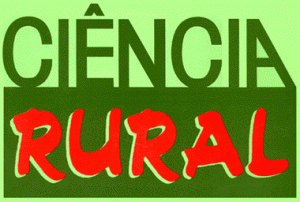Maria Luiza De Grandi, journalist from Ciência Rural, Santa Maria RS, Brazil.
Rodrigo Scherer, Research Associate of Universidade de Vila Velha (UVV). Vila Velha, Espírito Santo, Brasil.

There are more than 60 different species of grapes and some have beneficial properties for the human body. Researchers from the Universidade de Vila Velha (UVV) evaluated the composition and the cancer chemopreventive and antioxidant activities of the seed, pulp and skin of Maximo hybrid grapes (IAC 138-22) harvested at different stages of maturation. The results pointed to a great influence of the maturation of the grapes, where the green seeds showed more chemopreventive and antioxidant properties than the others. The article Cancer chemopreventive and antioxidant activities of seeds, skin and pulp of hybrid grapes Maximo (IAC 138-22) in five different stages of maturation was published in Ciência Rural (vol. 52, no. 3).
The grapes analyzed in the research were cultivated in espalier system, in a winery in the State of Espírito Santo, Brazil. They were collected weekly. After collecting the ethanolic extracts from the grapes, the researchers determined the content of total phenolic substances, anthocyanins and tannins. Antioxidant activity was evaluated by different chemical methods, and cell viability (macrophages and melanomas), and cancer chemopreventive activity was tested in cell cultures by quinone reductase induction assay, TNF-induced NF-κB inhibitory activity assay -α and aromatase inhibitory activity assay.

Imagem: Pixabay
The results indicated that the ripening of the grapes significantly influenced the phenolic content. The greenest grapes had the highest content of total phenolics, having greater antioxidant and chemopreventive action, when compared to the most mature grapes. Antioxidant assays confirmed the potential antioxidant effect of seeds and husks. In the evaluation of cancer chemopreventive activity, green seeds showed the ability to inhibit NF-κB and aromatase activity, important factors for the early stage of cancer development, suggesting beneficial health effects. It should be noted that the seeds are almost always discarded.
As an unprecedented study, the research demonstrates the need to isolate promising samples for later elaboration and development of specific products based on the seed or skin of the hybrid Máximo grape (IAC 138-22). “The innovative results of the research indicate that grape seeds can inhibit the initial phase of some types of cancer, but future isolation studies are necessary to isolate the active molecule.”, explains researcher Rodrigo Scherer.
References
TECCHIO, M. A. et al. Yield of white and red grapes, in terms of quality, from hybrids and Vitis labrusca grafted on different rootstocks. Scientia Horticulturae [online]. 2020, vol. 259, 108846 [viewed 22 November 2022]. https://doi.org/10.1016/j.scienta.2019.108846. Available from: https://www.sciencedirect.com/science/article/abs/pii/S0304423819307320?via%3Dihub
XIAO, H. et al. Quality assessment and discrimination of intact white and red grapes from Vitis vinifera L. at five ripening stages by visible and near-infrared spectroscopy. Scientia Horticulturae [online]. 2018, vol. 233, no. 1, pp. 99-107 [viewed 22 November 2022]. https://doi.org/10.1016/j.scienta.2018.01.041. Available from: https://www.sciencedirect.com/science/article/abs/pii/S0304423818300487?via%3Dihub
To read the article, access
FREIRE, D.R.G.C., et al. Atividades quimiopreventiva de câncer e antioxidante de sementes, casca e polpa de uvas híbridas Maximo (IAC 138-22) em cinco diferentes estágios de maturação. Cienc. Rural [online]. 2022, vol. 52, no. 3, e20200962 [viewed 22 November 2022]. https://doi.org/10.1590/0103-8478cr20200962. Available from: https://www.scielo.br/j/cr/a/wDn7xVwKPkTVfn8DhBPFc4n/abstract/?lang=pt
External links:
Ciência Rural – CR: http://coral.ufsm.br/ccr/cienciarural/
Como citar este post [ISO 690/2010]:


















Recent Comments